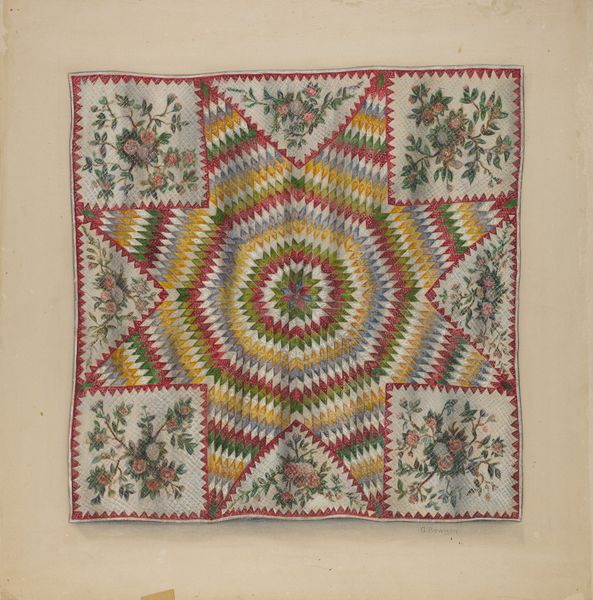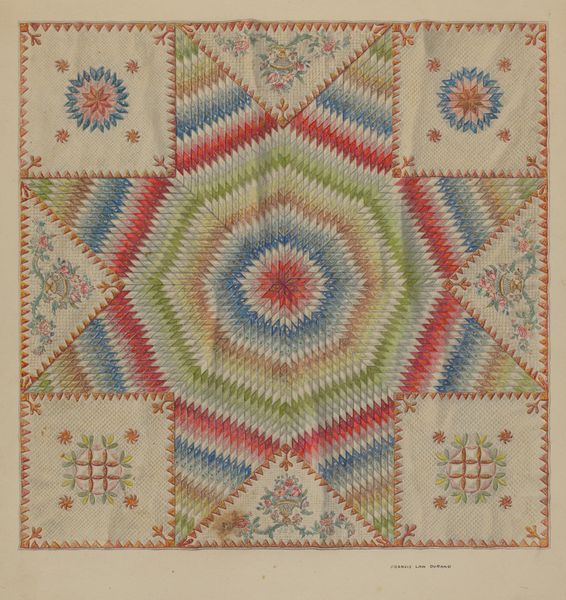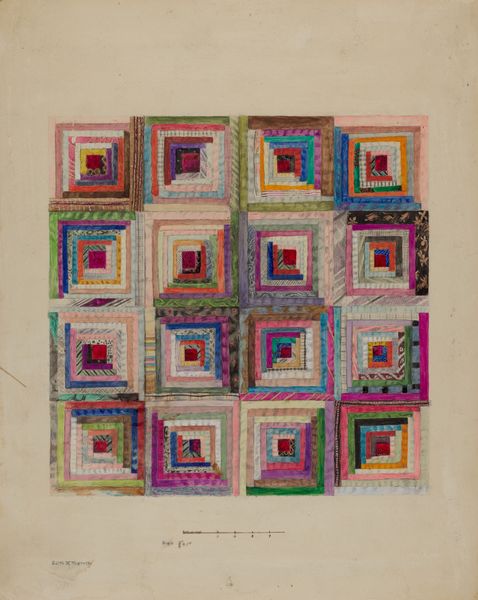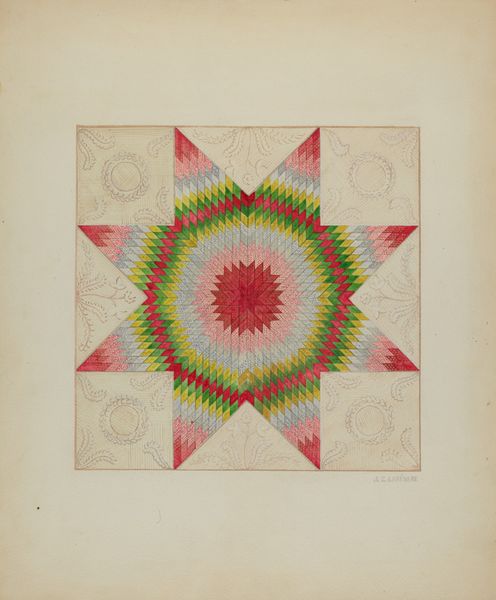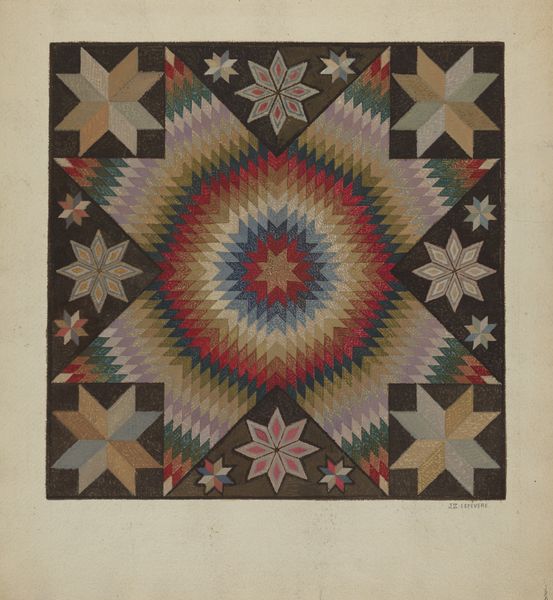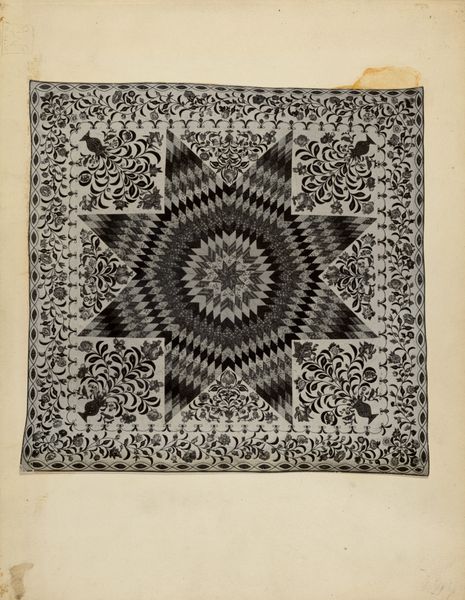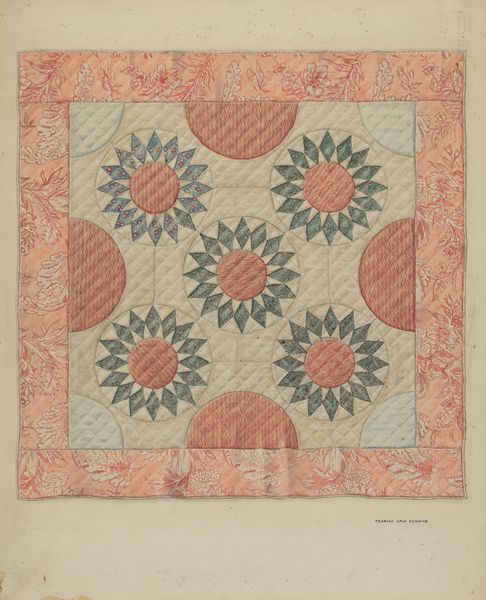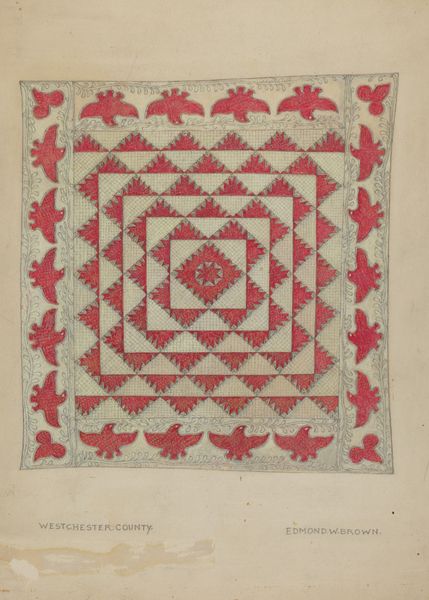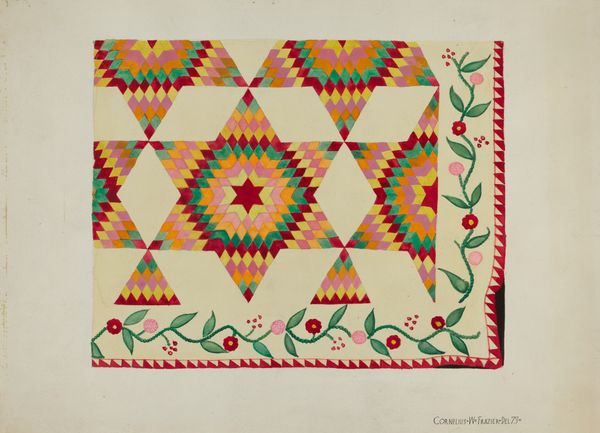
fibre-art, textile
#
fibre-art
#
textile
#
folk-art
#
geometric
#
textile design
Dimensions: overall: 48.5 x 47.4 cm (19 1/8 x 18 11/16 in.) Original IAD Object: 84" square
Copyright: National Gallery of Art: CC0 1.0
This drawing depicts a quilt made by Vincent P. Rosel, sometime between 1855 and 1995. It's a striking example of the patchwork tradition, likely made from repurposed textiles. The quilt's visual power resides in the meticulous arrangement of colorful diamond shapes, radiating outwards from a central star. These shapes would have been carefully cut and sewn together, a labor-intensive process reflecting both thrift and artistry. Quilting bees, where communities gathered to create these objects, were once common. The act of quilting transformed humble, everyday materials into objects of beauty and utility, demonstrating creativity and social connection. This resonates with the wider social issues of labor, politics, and consumption. Quilts were often made in the home, by women, and this particular example challenges the traditional distinction between craft and fine art. It invites us to consider the significance of materials, making, and context in understanding an artwork's full meaning.
Comments
No comments
Be the first to comment and join the conversation on the ultimate creative platform.
